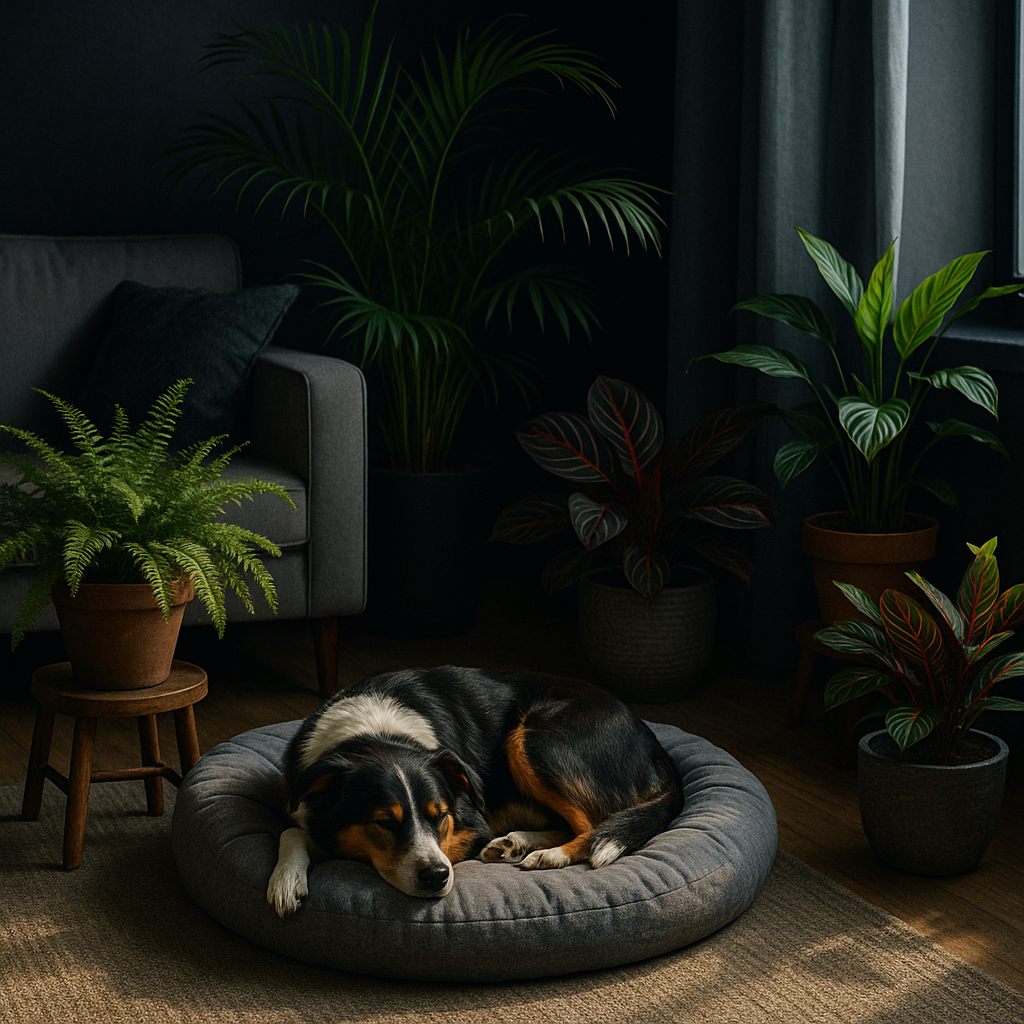Bringing nature into your home with plants is a wonderful way to improve your mood, decorate your space, and purify the air. But for pet owners living in apartments, the addition of greenery comes with a few extra responsibilities. Many common houseplants can be toxic to cats and dogs, and curious paws and mouths often find their way into pots, leaves, and even fertilizer bags.
If you share your apartment with pets and plants, this article will guide you through creating a safe, harmonious environment where both can thrive.
Understanding Plant Toxicity for Pets
It’s easy to assume that all plants are harmless, but some can cause mild to severe reactions in animals. Ingesting certain leaves or flowers can lead to vomiting, diarrhea, drooling, skin irritation, and even more serious issues like kidney failure or neurological symptoms in extreme cases.
Some common toxic houseplants include:
- Peace Lily (Spathiphyllum)
- Snake Plant (Sansevieria)
- Pothos (Epipremnum aureum)
- Philodendron
- ZZ Plant (Zamioculcas zamiifolia)
- Aloe Vera (safe for humans, not for pets)
- Sago Palm (extremely toxic)
Before buying any new plant, it’s essential to cross-reference its name with trusted sources such as the ASPCA’s plant toxicity database to ensure it won’t harm your furry friends.
Pet-Safe Houseplants You Can Trust
Thankfully, there are plenty of beautiful, pet-safe options for apartment dwellers. These plants add vibrancy to your home without putting your pets at risk:
- Areca Palm: A tall, tropical plant that’s non-toxic and great for air purification.
- Spider Plant: Hardy, adaptable, and safe for cats and dogs.
- Calathea: Known for its stunning leaf patterns and safe nature.
- Prayer Plant (Maranta): Pet-friendly and ideal for low-light spaces.
- Peperomia: A diverse family of compact, colorful plants that are safe for pets.
- Bamboo Palm: A great floor plant with a tropical vibe.
- African Violet: A flowering plant that’s non-toxic and easy to grow.
Always double-check scientific names, as common names can refer to multiple species—some safe, some not.
Placement Is Key: Keeping Plants Out of Paw’s Reach
Even if your plants are non-toxic, it’s wise to prevent your pets from digging in soil or chewing leaves. Here are some ways to place your plants smartly:
1. Use High Shelves and Hanging Planters
Cats, in particular, love to explore—but placing your plants on high, narrow shelves or in hanging baskets can deter them. Macrame plant hangers or ceiling-mounted planters work well in apartments and keep the foliage out of reach.
2. Create a Plant-Only Zone
Designate one room or corner of your apartment as a no-pet zone, using pet gates or closed doors. This is especially useful if you want to grow a wider variety of plants that might not be safe in shared spaces.
3. Use Decorative Terrariums or Glass Domes
Smaller plants can be placed inside closed glass terrariums, protecting both the plant and your pet. This also adds a stylish touch to your home decor.
4. Secure Larger Floor Plants
If you have large floor plants, consider placing heavy stones over the soil to discourage digging. You can also use plastic mesh or chicken wire just beneath the soil surface to deter curious paws.
Training Tips: Teaching Pets to Leave Plants Alone
You can help your pet and your plants coexist peacefully with a bit of gentle training:
- Use deterrent sprays (citrus scents are disliked by many cats and dogs).
- Provide distractions, like cat grass or pet-safe chew toys, to redirect their curiosity.
- Reward good behavior: praise and treats go a long way in reinforcing that plants are not toys.
Patience is key, especially with young pets or newly adopted animals.
Soil and Fertilizer Safety
Beyond the plants themselves, be cautious with what goes into the soil. Many standard fertilizers, especially those with slow-release pellets or high nitrogen levels, can be harmful if ingested.
To make your setup safer:
- Use organic, pet-safe fertilizers.
- Keep fertilizer and plant food containers tightly sealed and stored securely.
- Avoid using chemical insecticides or fungicides indoors—opt for natural alternatives like neem oil or soap sprays.
Also, cover any exposed soil with pebbles or coconut husk mulch to make digging less appealing to pets.
Combining Design With Safety
Pet-safe doesn’t mean boring! You can still have a beautifully styled indoor garden with careful selection and arrangement:
- Use a tiered plant stand for multiple levels of plants—safe on top, decorative or pet-friendly below.
- Add variety with textures and colors from calatheas, peperomias, and ferns.
- Incorporate plant-safe lighting to highlight foliage and create ambiance.
- Choose neutral ceramic pots or colorful planters that match your apartment’s theme.
Creating harmony between your pets and plants is about balance, not compromise.
When Accidents Happen
Even with precautions, pets are curious by nature. If your pet does chew on or ingest part of a plant:
- Identify the plant immediately.
- Check symptoms: Is your pet drooling, vomiting, or acting lethargic?
- Contact your vet or a poison control center—preferably the ASPCA Animal Poison Control (U.S.) or a local equivalent.
Keep the plant label or name on hand in case of emergency.
A Home Where Pets and Plants Thrive
Having both pets and plants in a small apartment may require a bit more planning, but the result is worth it. With safe plant choices, thoughtful placement, and a little training, your apartment can be a lush, peaceful retreat for all its residents—two-legged or four.
Whether you’re a dog lover, cat companion, or both, there’s no need to choose between greenery and animal company. You just need the right strategy—and now you have it.
